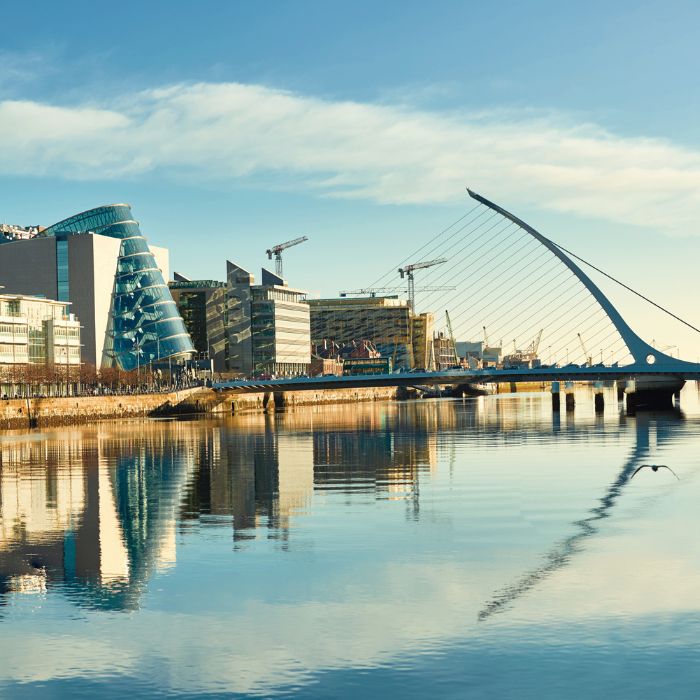Office Footprint Reductions and Their Impact on Immigration Obligations: Part 1 - Nonimmigrant Visas
April 18, 2023

Country / Territory
Related contacts
Related offices
Related contacts
Related offices
Related contacts
Related offices
The COVID-19 pandemic served as a teacher of sorts, demonstrating a variety of new lessons that affected people around the world. For many, it proved that remote work was not only possible but also, at times, a necessity.
For many businesses, the pandemic illuminated the fact that they could maintain successful operations with fewer employees on-site in their offices. Accordingly, many employers in the United States consolidated their office spaces or even closed numerous corporate locations.
While the impact on margins and overhead expenses because of reduced office footprints could certainly be notable, the impact on foreign national employees is undoubtedly significant. The first part of this two-part blog series will focus on this impact to employees on nonimmigrant visas.
Understanding the Impact on Foreign National Employees
Those in the immigration and mobility industry often comment that U.S. immigration is a bit of an “alphabet soup,” particularly when it comes to the various visa types. For purposes of this blog series, analysis is limited to only those employees who are on a nonimmigrant visa that includes a U.S. Department of Labor certified Labor Condition Application (LCA). More specifically, these visa types include the H-1B, E-3 and H-1B1. For these three visa classifications, an employee is largely tied to the details included on the LCA, including, but not limited to the stated: job title, salary, employer and work location.
As defined by regulation and clarified in United States Citizenship and Immigration Services (USCIS) guidance, an amendment petition must first be submitted for an employee on one of these stated visa classifications if there is a change to the employee’s place of employment to a worksite location outside of the Metropolitan Statistical Area (MSA) covered by the existing petition and supplementary LCA.
Conversely, and for example, if an employee on an H-1B is moving to a new job location within the same MSA or area of intended employment listed on the existing LCA, then a new LCA is not required. Therefore, an employer does not need to file an amended H-1B petition, however, the original LCA must be posted in the new work location within the same MSA or area of intended employment for 10 business days.
Conducting Proper Impact Analysis
In light of the above, it is critical that employers conduct the necessary analysis for their impacted foreign national employees when considering an office closure before the changes in their work conditions take effect.
Some preliminary questions to assess include:
- What visa is my employee on in the United States?
- What is the employer office address on the existing LCA?
- Whether the employee will work from home, and if so, where is home?
- Will the employee work from a new office, or is it a shared office setting?
Once employers fully understand and have answers for these data points, it is important to work with immigration counsel to assess whether an amendment petition is required, or if another strategy to ensure compliance is permissible, such as posting the original LCA at the new worksite. This analysis is critical, as in many cases proper and timely action can reduce risk while also ensuring compliance for employees who are reliant on U.S. work visas to maintain their work authorization.
Need to Know More?
Please look out for part two of this blog series coming soon, which will focus on office closures and their impact on employees within the employment-based Green Card process.
While the above should serve as a helpful and initial roadmap for navigating these issues, it is important to note that the impact on employees may vary. Beyond this general guide for understanding the key, high-level points, please contact Senior Associate Christopher Gregorio at [email protected] for additional assistance with complex strategy decisions.
This blog was published on April 18, 2023, and due to the circumstances, there are frequent changes. To keep up to date with all the latest updates on global immigration, please subscribe to our alerts and follow us on LinkedIn, Twitter, Facebook and Instagram.
Country / Territory
Related contacts
Related offices
Related contacts
Related offices
Related contacts
Related offices
Explore more at Fragomen

Media mentions
Partner K. Edward Raleigh highlights how recent H-1B changes are shaping employer compliance strategies.

Media mentions
Practice Leader Colm Collins explains that processing delays, shifting demand in information and communication technology (ICT) and renewal cycles contributed to last year’s drop in work permit approvals.

Media mentions
Partner Rick Lamanna examines current pressures on Canada’s immigration system, including processing delays, reduced admissions and policy uncertainty and the implications for applicants and employers.

Blog post
Manager Mihaela Dumitru outlines how Swiss authorities assess Employer of Record and body-leasing models, highlighting key compliance risks, licensing requirements and a regulatory update affecting EU and EFTA nationals effective 1 January 2026.

Media mentions
Partner Karolina Schiffter discusses how courts in Poland are reinforcing timely processing and constitutional protections for foreigners.

Blog post
Immigration Manager Alice Heron examines Ireland’s updated employment permit salary thresholds taking effect in March 2026, including the reintroduction of graduate-specific Minimum Annual Remuneration bands and what these changes mean for employers planning graduate recruitment in 2026 and 2027.

Media mentions
Partner Jill Bloom explains how the new wage-based H-1B selection rule may influence hiring decisions and prompt employers to reassess workforce planning and explore alternative visa options.

Media mentions
Partner K. Edward Raleigh discusses how companies are rethinking their H-1B strategies amid evolving policies.

Awards
Senior Counsel Mitch Wexler is recognized by EB5 Investors Magazine as a 2025 Top 25 award recipient, reflecting leadership and long-standing impact in the global investment immigration space.

Media mentions
Partner K. Edward Raleigh highlights how recent H-1B changes are shaping employer compliance strategies.

Media mentions
Practice Leader Colm Collins explains that processing delays, shifting demand in information and communication technology (ICT) and renewal cycles contributed to last year’s drop in work permit approvals.

Media mentions
Partner Rick Lamanna examines current pressures on Canada’s immigration system, including processing delays, reduced admissions and policy uncertainty and the implications for applicants and employers.

Blog post
Manager Mihaela Dumitru outlines how Swiss authorities assess Employer of Record and body-leasing models, highlighting key compliance risks, licensing requirements and a regulatory update affecting EU and EFTA nationals effective 1 January 2026.

Media mentions
Partner Karolina Schiffter discusses how courts in Poland are reinforcing timely processing and constitutional protections for foreigners.

Blog post
Immigration Manager Alice Heron examines Ireland’s updated employment permit salary thresholds taking effect in March 2026, including the reintroduction of graduate-specific Minimum Annual Remuneration bands and what these changes mean for employers planning graduate recruitment in 2026 and 2027.

Media mentions
Partner Jill Bloom explains how the new wage-based H-1B selection rule may influence hiring decisions and prompt employers to reassess workforce planning and explore alternative visa options.

Media mentions
Partner K. Edward Raleigh discusses how companies are rethinking their H-1B strategies amid evolving policies.

Awards
Senior Counsel Mitch Wexler is recognized by EB5 Investors Magazine as a 2025 Top 25 award recipient, reflecting leadership and long-standing impact in the global investment immigration space.





